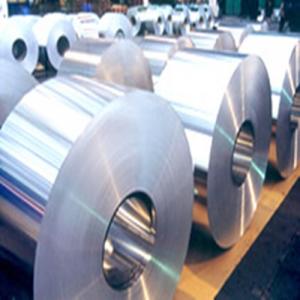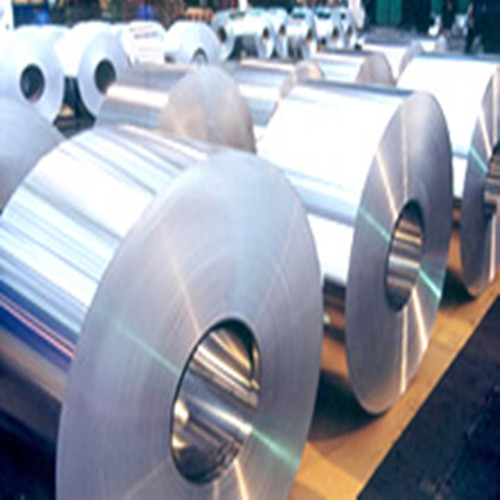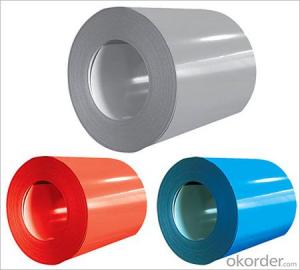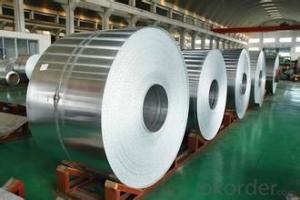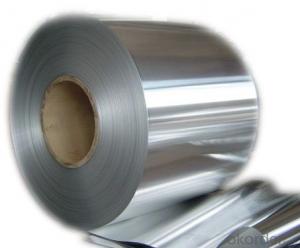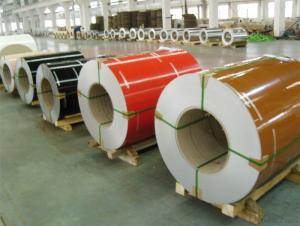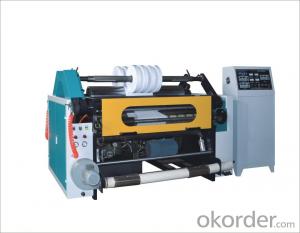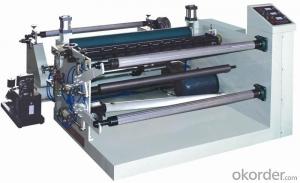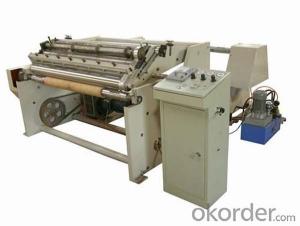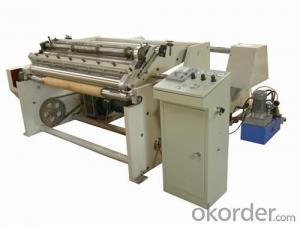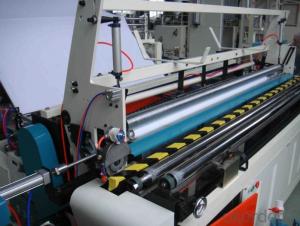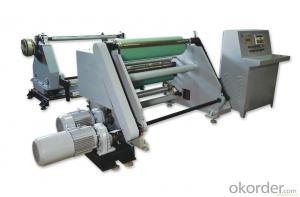Aluminum Coil Slitter Rewinder Machine for Printing Aluminum Products
- Loading Port:
- China Main Port
- Payment Terms:
- TT OR LC
- Min Order Qty:
- -
- Supply Capability:
- -
OKorder Service Pledge
OKorder Financial Service
You Might Also Like
Printing industry left the age of “Stereotype and Branding”, and step into the era of “Photo and Electronics”.Aluminum lithographic support material provides a strong sustaining for this renovation in printing industry.
It will be mostly used in making lithographic support, which is a new type of material among the printing industry for automatic and presswork.
Features:
1.Pre-painted galvanized steel coil is light , beautiful and with good anti-erosion performance.
2.The service life of hot dip galvanized steel plates based color coated steel plates is much longer. As the organic coating covered on the zinc layer has isolation effect, can prevent the steel from rusty better.
3.PPGI can be processed directly, it provides a new raw material for the construction, shipbuilding, vehicle manufacturers, furniture industry.
Applications: Widely applied for construction, home appliance, furniture, transportation and other industries.If you are interested in our products, please do not be hesitate to let us know. We will be happy to give yo a quotation upon receipt of your detailed requirements.
- Q: What is the shear strength of aluminum coils?
- Various factors, such as alloy composition, temper, thickness, and processing conditions, can cause the shear strength of aluminum coils to vary. When compared to materials like steel or titanium, aluminum alloys generally have lower shear strength. However, the primary considerations for using aluminum coils are their lightweight nature, corrosion resistance, and malleability, rather than their shear strength. To obtain a more precise answer, it is necessary to specify the exact alloy, temper, and dimensions of the aluminum coil in question. These factors greatly impact the shear strength of the material. Additionally, it is important to note that factors like impurities, heat treatment, and the manufacturing process employed can influence shear strength. In conclusion, the shear strength of aluminum coils can differ based on various factors, and it is crucial to consider the specific alloy, temper, and dimensions to determine the exact strength of the material for a given application.
- Q: aluminum welding
- Impossible. You need a TIG welder with AC and high frequency. Although you CAN use solid wire MIG with 100% argon shield gas, this is not a job for amateurs. MIG welding aluminum requires professional-grade equipment and several years experience with welding.
- Q: Can aluminum coils be used in the production of kitchen utensils?
- Yes, aluminum coils can be used in the production of kitchen utensils. Aluminum is a popular choice for kitchen utensils due to its lightweight, durable, and heat-conducting properties. Aluminum coils can be easily shaped and molded into various utensil designs such as pots, pans, baking trays, and even cutlery. Additionally, aluminum is resistant to corrosion, making it suitable for contact with food and liquids. It is important to note that aluminum utensils may require a non-stick coating or a protective layer to prevent the reaction between aluminum and certain acidic or alkaline foods. Overall, aluminum coils are widely used in the production of kitchen utensils due to their versatility and practicality.
- Q: What specific tools are required for handling and working with aluminum coils?
- <p>Working with aluminum coils typically requires specialized tools to ensure safety and efficiency. These include cutting tools like metal snips or shears designed for aluminum, which are crucial for cutting the coils without damaging them. Additionally, a coil carrier or uncoiler is necessary for handling and unrolling the coils without causing injury or deformation. Protective gear such as gloves and safety glasses is also essential to prevent injuries from sharp edges or debris. For more precise work, a metal straightener or leveling machine may be needed to correct any warping in the aluminum coils.</p>
- Q: What is virgin aluminum? I can't find anything about it, is it just another word for aluminum? Is there a difference?
- Aluminum that contains no recycled aluminum.
- Q: This question is asking about the potential negative effects or hazards associated with the use of aluminum coils.
- <p>The use of aluminum coils can pose certain risks and dangers, primarily due to their high thermal conductivity and reactivity. When used in cooking or heating applications, aluminum coils can cause uneven heat distribution, which may lead to burning or melting of food. Additionally, aluminum can react with acidic or alkaline foods, potentially leaching aluminum into the food and causing health concerns such as neurological disorders and bone diseases. Moreover, aluminum coils can corrode over time, especially when exposed to moisture or certain chemicals, which can weaken their structure and pose a risk of breakage or injury. It's important to use aluminum coils appropriately and to monitor their condition regularly to minimize these risks.</p>
- Q: How are aluminum coils used in the production of automotive heat shields?
- Aluminum coils play a crucial role in the production of automotive heat shields. Heat shields are essential components in vehicles designed to protect various parts from excessive heat generated by the engine, exhaust system, or other heat sources. These shields are typically made from lightweight and heat-resistant materials, and aluminum coils are a popular choice due to their excellent thermal conductivity, durability, and corrosion resistance. In the production process, aluminum coils are first unwound and then cut into sheets of the desired size for the heat shields. These sheets are then formed into specific shapes using various techniques such as stamping, bending, or deep drawing. The ability of aluminum to be easily shaped and molded makes it ideal for creating heat shields with complex geometries, ensuring a precise fit in the vehicle. Once the desired shape is achieved, the aluminum sheets are often treated with a surface coating to enhance their heat resistance and protect against corrosion. This coating can be in the form of a ceramic or metallic layer, providing an additional barrier against extreme temperatures. The formed and coated aluminum sheets are then typically layered with other insulating materials, such as ceramic fibers or laminated films, to further enhance the heat shield's performance. These additional layers help to reduce heat transfer by reflecting or absorbing the heat energy, thereby protecting the surrounding components from potential damage or overheating. Finally, the assembled heat shields are mounted in specific locations within the vehicle, such as around the exhaust system or near the engine, using fasteners or adhesive techniques. The lightweight nature of aluminum coils ensures that the heat shields do not add unnecessary weight to the vehicle, which is crucial for maintaining fuel efficiency and overall performance. In conclusion, aluminum coils are used extensively in the production of automotive heat shields due to their excellent thermal conductivity, durability, and corrosion resistance. Their ability to be easily shaped and molded, combined with surface coatings and additional insulating layers, ensures effective heat insulation and protection for various vehicle components.
- Q: How are aluminum coils processed for specific thicknesses?
- Aluminum coils are processed for specific thicknesses through a combination of cold rolling and annealing processes. Initially, the coils go through a series of cold rolling mills that gradually reduce their thickness and improve their surface quality. This is achieved by passing the coils through a set of rollers that exert pressure and compress the aluminum, resulting in a thinner and more uniform sheet. After cold rolling, the coils undergo an annealing process, where they are heated and then slowly cooled to enhance their mechanical properties and eliminate any residual stresses. This combination of cold rolling and annealing allows for precise control over the thickness of the aluminum coils, catering to the specific requirements of various industries.
- Q: What are the maintenance requirements for aluminum coils?
- To ensure optimal performance and longevity, aluminum coils require regular cleaning and inspection. It is recommended to clean the coils at least once a year, or more frequently in areas with high pollution or corrosive environments. Use a mild detergent or coil cleaner along with a soft brush or cloth to remove any accumulated dirt, dust, or debris from the coils' surface. Regular inspection is also crucial to identify any signs of damage, corrosion, or leakage. Bent fins, dents, or corrosion should be promptly addressed to prevent further harm and maintain coil efficiency. If there are any indications of leakage, it is essential to have a professional technician inspect and repair the coils to prevent potential refrigerant leaks. Additionally, it is advisable to keep the area around the coils clean and free from obstructions that may hinder airflow, such as leaves, plants, or debris. This will ensure proper airflow and prevent the coils from overworking, which can result in inefficiency and possible damage. In conclusion, maintaining aluminum coils involves regular cleaning, inspection for damage, corrosion, or leakage, and keeping the surrounding area clear for optimal performance and longevity. By following these maintenance practices, you can ensure the efficient functioning of the aluminum coils and extend their lifespan.
- Q: Aluminum roll width 750mm, single layer thickness 6.5mm, diameter 400mm., how to calculate the weight of the aluminum roll?
- You can use the outside diameter, the inner diameter and the width to get the volume. You know the density and volume, and then you can find the weight naturally
Send your message to us
Aluminum Coil Slitter Rewinder Machine for Printing Aluminum Products
- Loading Port:
- China Main Port
- Payment Terms:
- TT OR LC
- Min Order Qty:
- -
- Supply Capability:
- -
OKorder Service Pledge
OKorder Financial Service
Similar products
Hot products
Hot Searches
Related keywords
